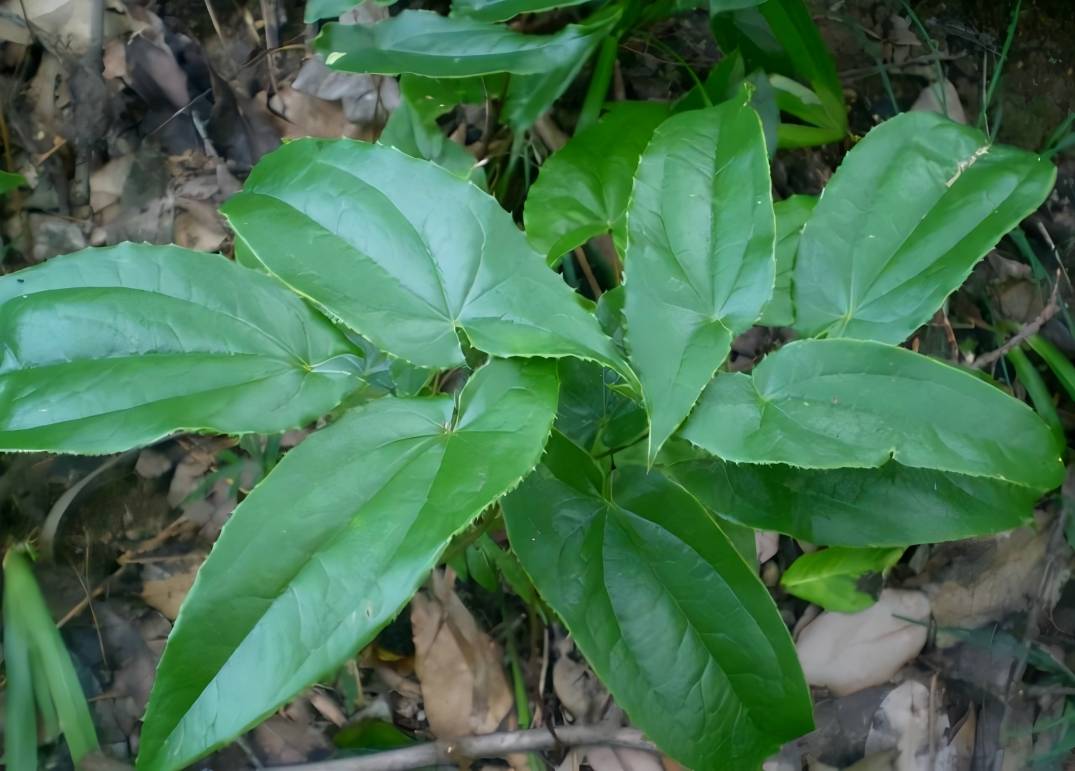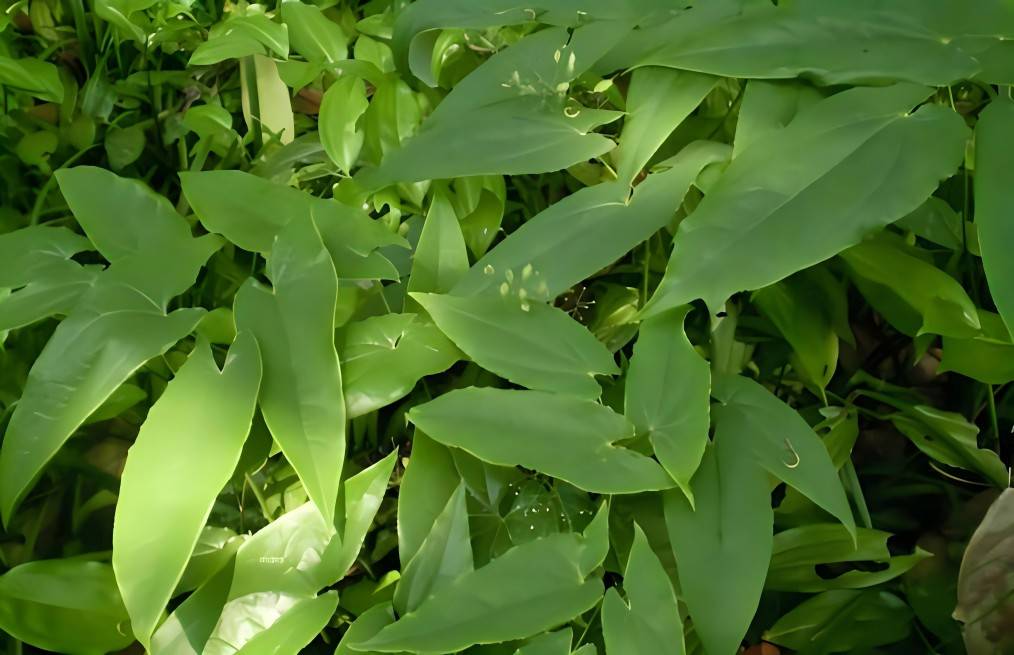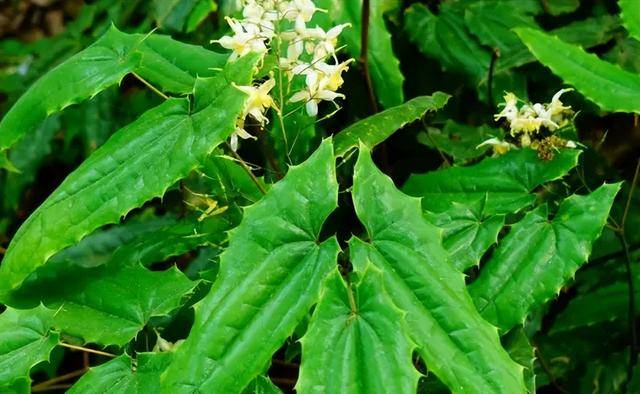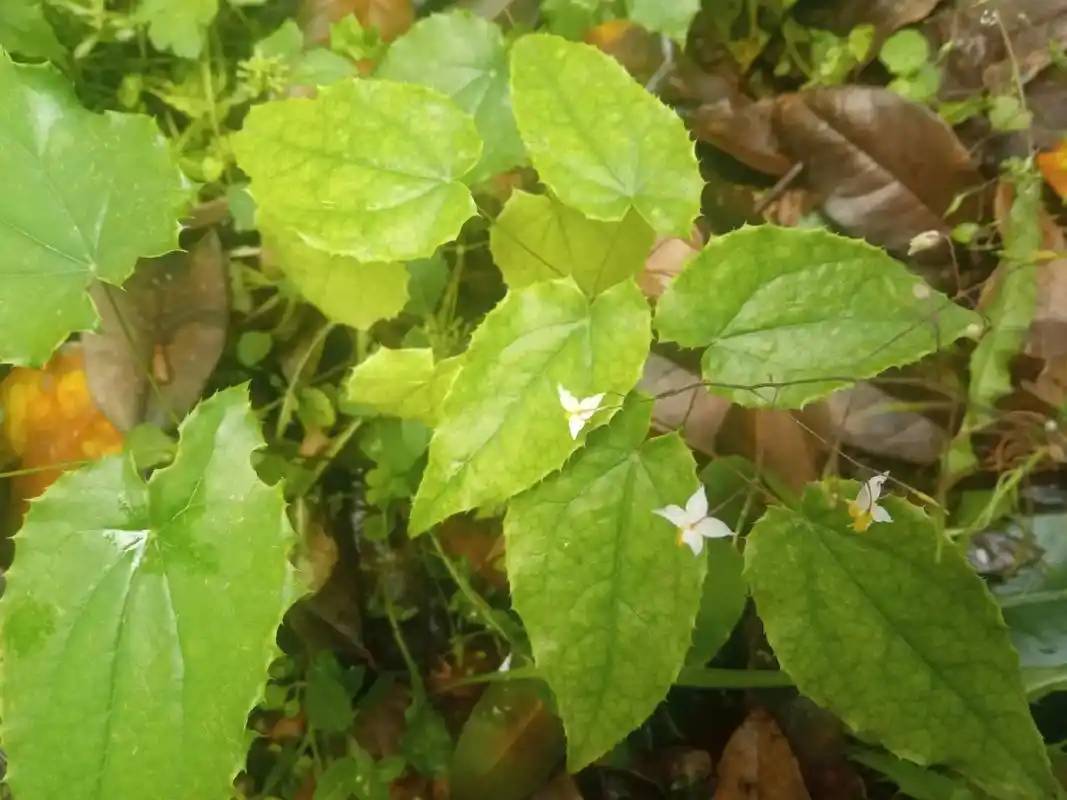What Is the Use of Epimedium Extract Powder in Animal Feeding?
Epimedium is also known as xianlingpi (literally “immortal spirit's leg”) or qizhangcao (literally “abandoned staff herb”). It is the dried leaf of epimedium brevicornum, epimedium sagittatum, epimedium pubescens or epimedium koreanum, all of the Berberidaceae family, and is a perennial herb native to Sichuan, Guizhou, Shaanxi and Hunan provinces in China[1]. In traditional Chinese medicine, Epimedium is classified as a tonic herb. It is pungent, sweet and warm in nature, and enters the liver and kidney channels. It tonifies the kidney yang, dispels wind-dampness and strengthens the muscles and bones[2].
Modern pharmacological studies have shown that Epimedium has biological functions such as anti-oxidation[3], immune enhancement[4], reproductive enhancement[5], anti-osteoporosis[6], and anti-tumor[7]. It can be used as a new type of feed additive in livestock and poultry production to improve the quality of animal semen[8], enhance immune function[9], and relieves oxidative stress[10]. This paper briefly introduces the active substances and biological functions of Epimedium extract, reviews the application of Epimedium extract in livestock and poultry farming, and provides a reference for further promoting the application of Epimedium extract in animal production.
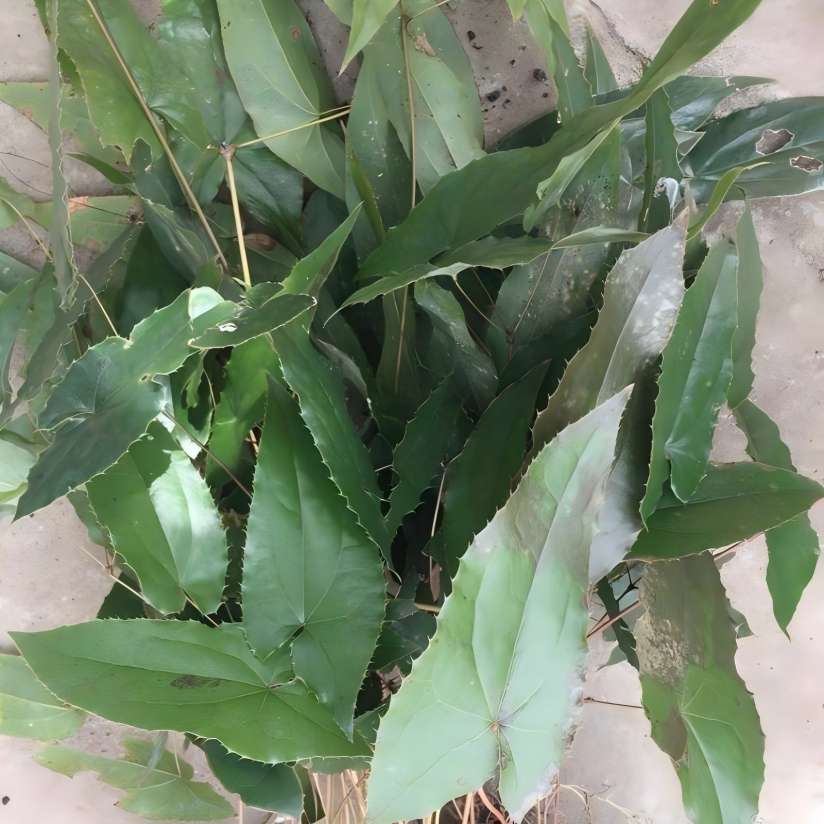
1 Active Ingredient of Epimedium extract
1.1 Flavonoids
Icaris flavonoids are the active ingredients extracted from the stems and leaves of Icaris plants. They mainly include icariside A, icariside B, icariside C, icariside, icarisin A, icariside I, Icariin A, Icariin C, and Icariside I, etc.[11-12], among which icariside is the main component of icariin flavonoids that exert pharmacological activity[13]. Studies have shown that the flavonoid content detected from different varieties of Epimedium is 29.72-82.63 mg/g [14].
1.2 Polysaccharides
Epimedium polysaccharide is an active heteropolysaccharide isolated from the medicinal plant Epimedium[15]. Rao Jinhua et al.[16] used high performance liquid chromatography to analyze the monosaccharide composition of Epimedium heteropolysaccharide and found that the monosaccharides were composed of mannose, rhamnose, glucose, galactose, and arabinose.
1.3 Alkaloids
Alkaloids are basic nitrogen-containing compounds with strong biological activity and are one of the important active substances in medicinal plants [17]. The alkaloids in Epimedium brevicornum are mainly magnoflorine [18], followed by berberine, alkaloid A, and palmatine [19]. Sun Chenqian et al. [20] analyzed the content of nine epimedium alkaloids using near-infrared diffuse reflectance spectroscopy and found that the content of epimedium alkaloids ranged from 6.537 to 20.586 mg/g, with the content of pilose epimedium alkaloids being the highest.
1.4 Lignans
At present, more than 40 lignin compounds have been isolated from Epimedium plants [21], including mainly icariin A1, icariin A2, icariin E1, icariin E2, epimedoside A, chlorogenic acid, Icariside H1, oleanolic acid, oleanolic acid-4-β-D-glucopyranoside, and sessilin B, etc.[22-23].
1.5 Other substances
Icaris also contains essential oil, tannins, sesquiterpenes, phytosterols, phenyl glycosides, colored proto-ketones, palmitic acid, stearic acid, sterols, oleic acid, glucose, fructose, linoleic acid, tricosane, non-flavonoids, anthraquinones, anthocyanins, essential fatty acids, trace elements and other biologically active ingredients [24-25].
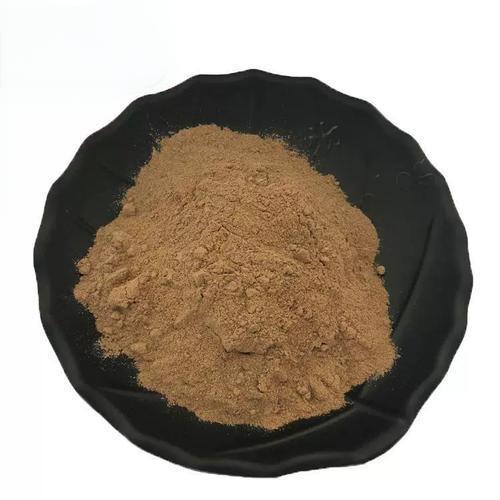
2 Biological functions of Epimedium extract
2.1 Antioxidant function
Studies have shown that the total polyphenols in Epimedium can scavenge DPPH free radicals, and the scavenging rate can reach 81.26% at a total polyphenol concentration of 250 mg/L [26]. Wang Qinjun et al. [27] found that the scavenging rate of Icaris against DPPH and ABTS+ radicals was comparable to that of the positive control VC, indicating that Icaris extract has strong in vitro antioxidant capacity. Li Bo et al. [28] studied the in vivo and in vitro antioxidant effects of Epimedium extract separately, and established a mouse subacute aging model. It was found that compared with the model group, the administration of Epimedium extract can reduce the level of malondialdehyde in the body, and increase the activities of superoxide dismutase (SOD), catalase (CAT), glutathione peroxidase (GSH-Px) activity and total antioxidant capacity (T-AOC), effectively scavenging OH and DPPH free radicals and having a good antioxidant effect.
2.2 Improves reproductive function
The effects of Epimedium extract on the reproductive system are mainly manifested in the following aspects: increasing the thickness of the seminiferous tubule wall and the quality of the epididymis and seminal vesicles, stimulating the secretion of testosterone and estradiol, promoting sperm production[29]; increasing the serum anti-Müllerian hormone (AMH) level, down-regulating the expression levels of the γH2AX and 53BP1 genes, and promoting DNA damage repair to improve premature ovarian failure[30]; promoting the proliferation of testicular supporting cells by activating the phosphorylation level of extracellular signal-regulated protein kinase, improve the microenvironment for sperm production [31]; stimulate the hypothalamic-pituitary-gonadal axis and the phosphoinositide 3 kinase/protein kinase B signaling pathway to increase the activity of endothelial nitric oxide synthase in penile endothelial cells, increase the level of nitric oxide in the serum, and thereby improve reproductive performance [5].
2.3 Regulates bone metabolism
Epimedium can promote osteoblast proliferation [6], inhibit osteoclast differentiation and bone resorption [32], increase bone density [33], promote bone metabolism, and exert an anti-osteoporosis effect [34]. Sun Jie et al. [35] studied the effect of Epimedium extract on the healing process of osteoporotic fracture rats and found that Epimedium extract can reduce the activity of serum alanine aminotransferase (ALP), increase the expression of Notch1 and OPG, inhibit the expression of RANKL, and promote bone formation. Li Qiannan et al. [36] found that icariin accelerates bone matrix reconstruction by upregulating the expression levels of Nrf2 and HO-1 genes, downregulating the expression of the GPX4 gene, increasing the expression levels of ferrous ions and ROS in osteoclasts, and inhibiting osteoclast activity. He Dandan et al. [37] showed that icariin can inhibit osteoclast differentiation by binding to the RANKL protein target to prevent osteoporosis.
2.4 Enhances immunity
The regulation of the immune system by Epimedium brevicornum is related to enhancing the function of immune organs, promoting the proliferation of immune cells and the release of cytokines [38]. Cao et al. [39] found that in rats with atrophied thymus and spleen, feeding with icariin significantly increased the thymus and spleen indices. Lv Dianhong et al. [40] found that Icaris combined agent can increase the conversion rate of T lymphocytes in chicks and significantly promote the natural killer activity of NK cells. Gu Huanhuan et al. [4] found that 1250.0 mg/L Icaris polysaccharide can promote the proliferation of chicken ex vivo lymphocytes. Icaris polysaccharides can also promote the secretion of cytokines such as IL-2, IL-4, IFN-γ and IL-1β, thereby enhancing the immune response [41].
3 Application of Icaris extract in animal production
3.1 Application of Icaris extract in pig production
Zhang Jijuan et al. [42] found that compared with the control group, the estrus rate of sows in the group containing 50 g of Epimedium sagittatum extract was significantly higher, the survival rate of weaned piglets was significantly higher, the number of live piglets born per litter was significantly higher, and the interval between breeding was significantly shorter. It has been found that Injecting 5 mL of astragalus polysaccharide and sulphated epimedium polysaccharide solution into piglets, the number of white blood cells, red blood cells, haemoglobin and platelets in the peripheral blood was significantly higher than the effect of each individual addition, and the content of IFN-γ, IL-4, IL-10 and sIgA in the serum and intestines of piglets was also significantly higher than the individual addition groups [9]. Wang Tian et al. [43] found that the addition of 150 mg/kg Epimedium polysaccharide to the drinking water of 10-day-old piglets can significantly increase the antibody level and IFN-γ and IL-12 content in the serum, and enhance the immune effect of piglets against the PRRSV live vaccine.
Studies have found that adding 200 g/t of Epimedium extract and 500 g/t of Isatis tinctoria to the diet of boars can increase the volume, motility and density of the boar's semen by 10.31%, 2.23% and 6.03% respectively, and reduce the sperm deformity rate by 9.62% [8]. Studies have shown that the addition of 15 mg/L icariin to the room temperature storage of pig semen can effectively protect sperm motility, vitality, acrosome integrity and plasma membrane integrity, reduce oxidative damage to sperm, improve semen antioxidant capacity, and inhibit the growth of bacteria in semen[44]. Shi Bingnan et al. [45] found that adding different concentrations of icariin to the culture medium of porcine articular cartilage cells, 10 mg/L icariin had the best proliferative effect on porcine articular cartilage cells.
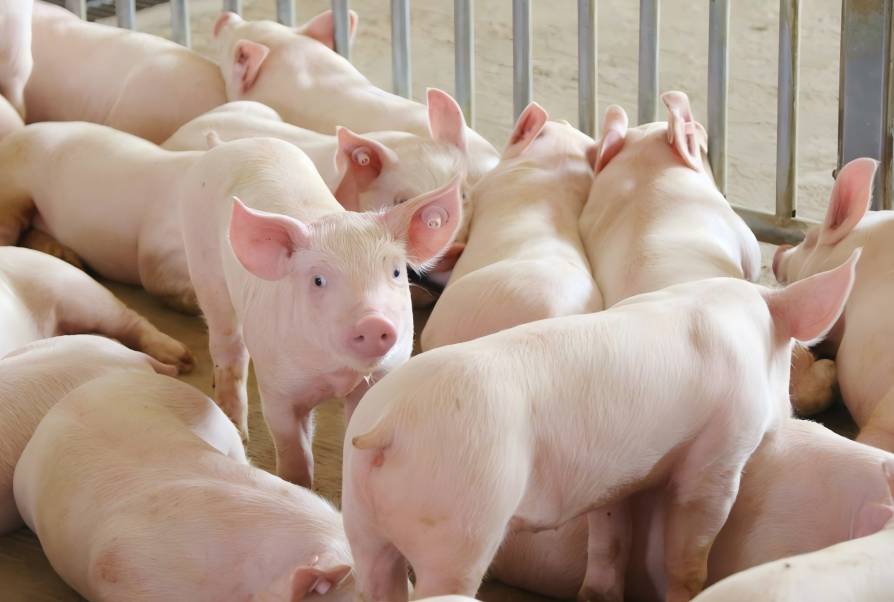
Zhao Ju et al. [46] found that adding 0.6 mg/L icariin to the culture medium of early pig embryos in vitro can increase the level of nitric oxide in the culture medium, inhibit the production of malondialdehyde, and help promote the culture of early in vitro fertilized pig embryos. Studies have found that adding Epimedium extract to minced pork during refrigeration has a good effect on maintaining meat quality [47]. Therefore, Epimedium extract can improve the reproductive performance of sows, improve semen quality, and can be used as an additive for the storage of semen at room temperature to regulate the growth and development of pig follicular granulosa cells, articular cartilage cells and early embryonic cells cultured in vitro.
3.2 Application of Epimedium extract in chicken production
Wang Anzhong [48] added 3.0% Bami Fucoidan (containing Epimedium) to the diet of laying hens under heat stress conditions. The laying number, total egg weight, average egg weight, egg shell weight and thickness of the laying hens were all significantly higher than those of the control group, and the feed-to-egg ratio, cholesterol content, and number of laying hens deaths were significantly lower than those of the control group.
Tong Xiaofeng et al. [10] added 0.05% and 0.20% icariin to the basal diet of laying hens. The results showed that the average egg weight of the laying hens in the group with 0.20% Icariside added increased by 2.65 g, the height of the egg white increased by 35.57%, and the content of malondialdehyde in the oviduct of the laying hens decreased by 36.63%. Li Xingyan et al. [3], Xiao Chuangang et al. [49] and Su Yuanyuan et al. [50] respectively injected 12.5, 25 and 50 g/L of Epimedium polysaccharide into chickens. The MDA content in the broilers in each test group was significantly reduced, and the SOD, GSH-Px and CAT activities in the serum were significantly increased.
It has been found that adding 1.4% compound Chinese herbal medicine (containing 5%–7% horny goatweed) to the diet of male chickens can alleviate the problem of scant semen caused by high-frequency semen collection [51]. Peng Xiaolue et al. [52] found that giving 21-day-old female guinea fowls 0.6 and 0.9 mL of an Epimedium extract orally could significantly increase the index of female reproductive organs and the concentration of estradiol in the blood plasma, promote ovarian development, and thus improve reproductive performance. Epimedium has a positive effect on the spleen index and immune cells of chickens [53-54], and this effect increases significantly with increasing dose [55].
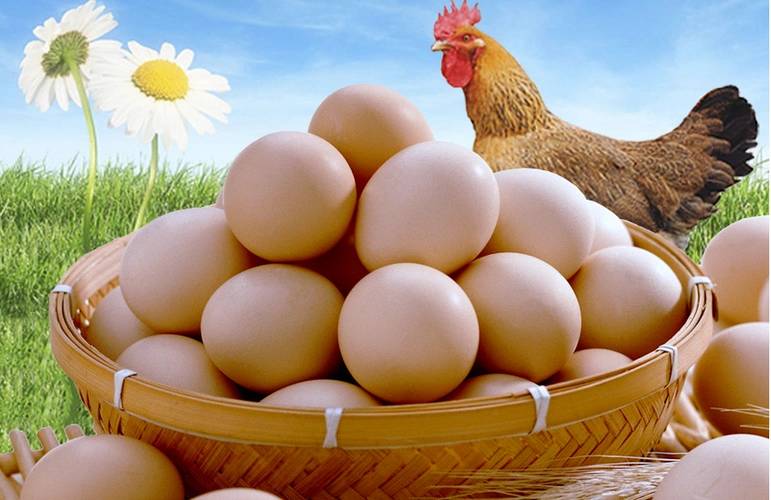
Epimedium extract can increase antibody titer [56] and promote the secretion of cytokines such as IL-2, IL-4, IL-10 and INF-γ from chicken peripheral blood T lymphocytes [57]. Icaris compound is a vaccine immunomodulator [58]. An additional injection of 0.3 mL of Icaris polysaccharide and astragalus polysaccharide mixture in the chicken Newcastle disease vaccine can significantly increase the serum specific antibody titer and promote the immune response to the Newcastle disease vaccine [59]. Kuang Ling et al. [60] added 46.7% Icaris polysaccharide to the immunization of chicken fowl's aspergillus vaccine to enhance the antibody titer, and the combination of Icaris polysaccharide and astragalus polysaccharide in the vaccine has a better effect. Therefore, adding epimedium extract to the chicken diet can improve reproductive performance and egg-laying performance, enhance the body's disease resistance and antioxidant function, and the compatibility of epimedium extract with other Chinese herbal medicines can enhance the effect of vaccine immunization.
3.3 Application of epimedium extract in the production of other animals
Zhou Huayan et al. [61] added 2% fermented Herba Epimedii herbal compound to the basic diet of dairy cows. The feed intake of the cows in the 7th to 14th day after parturition was 4.78 kg/d higher than that of the control group, an increase of 40.65%. The incidence of postpartum diseases was significantly reduced, and the breeding time of the cows was also advanced. Hou Wenyan et al. [62] patented invention of Chinese herbal medicine compound agent added 8 to 12 parts of Epimedium, which can improve the sperm motility and promote sperm production. Li Yu [63] showed that adding 3.0 g/L Icaris polysaccharide to goat frozen semen can improve the quality of sperm after freezing and thawing, reduce oxidative damage to sperm during freezing, preserve the quality of frozen semen, and increase the fertilization rate of semen.
Lei Tao et al. [64] added 0.01% Epimedium powder to the basic diet of Ding'an geese, and the average fertilization rate and hatchability of Ding'an geese increased by 23.00% and 22.54%, respectively. Shi Jinhu et al. [65] added 1% Epimedium sagittatum to the basic diet of Muscovy ducks, which increased the number of spermatogonia and spermatocytes and promoted sperm maturation. The content of testosterone, estradiol, follicle-stimulating hormone and luteinizing hormone in the serum of Muscovy ducks was significantly increased. Zhan Yang et al. [66] added 0.12, 0.60, 3.00, and 6.00 mg/L of Epimedium flavonoids to zebrafish larvae containing a 25 μmol/L prednisolone model drug solution. 6 mg/L of Epimedium flavonoids significantly increased the the stained area and the stained optical density value of the zebrafish head skeleton, indicating that Icaris flavonoids can alleviate prednisolone-induced osteoporosis in zebrafish.
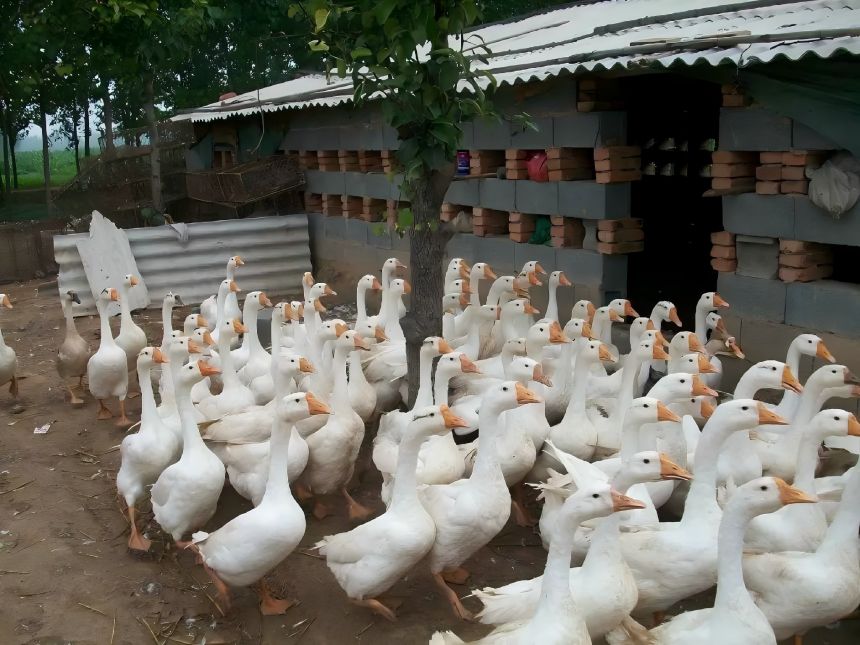
Wei Yingjie et al. [67] found that the addition of 2.5 mg/L icariin (containing 25 μmol/L prednisolone) can significantly inhibit or reverse the effect of prednisolone on inducing osteoporosis in zebrafish. Liu YZ et al. [68] added 0, 0.05%, 0.10%, 0.15%, 0.20%, and 0.25% icariin to New Zealand rabbit semen and stored it at 17 °C. They found that the addition of 0.20% icariin significantly improved the sperm motility, the integrity rate of plasma membrane and acrosome and SOD activity, effectively inhibiting bacterial contamination during semen preservation, thereby improving the quality of semen preservation.
4 Outlook
Epimedium extract can improve the quality of animal semen, enhance immunity, promote the growth and development of follicle and chondrocyte, improve the level of antioxidant, and is also a vaccine immune enhancer. However, current research on the various active ingredients in Epimedium extract mainly focuses on icariin and epimedium polysaccharides, while the biological functions of other effective ingredients and their effects in animal production require further research. In addition, the dosage and form of administration of Epimedium extract in animals need to be further explored.
References
[1] Gong Huaqian, Gao Min, Chai Yihui, et al. Research progress on the chemical composition and pharmacological effects of Epimedium sagittatum (Yinyanghuo) [J]. Journal of Hubei University for Nationalities: Medical Sciences, 2021, 38(4): 75-78.
[2] Wang Huanzhen, Chai Yihui, Chen Yunzhi, et al. Research progress on the chemical composition and pharmacological effects of Epimedium sagittatum (Yinyanghuo) [J]. Asia-Pacific Traditional Medicine, 2016, 12(7): 63-65.
[3] Li Xingyan, Jin Luyang, Xu Xiaofang, et al. Effect of Epimedium polysaccharide on the antioxidant function of chicks [J]. Chinese Journal of Veterinary Medicine, 2019, 55(10): 56-59.
[4] Gu Huanhuan, Yang Yaosen, Su Jianqing, et al. Study on the regulatory effect of Epimedium polysaccharide on chicken spleen lymphocytes [J]. China Poultry, 2018, 40(24): 54-57.
[5] Ding J, Tang Y, Tang Z, et al. Icariin improves the sexual function of male mice through the PI3K/AKT/eNOS/NO signalling pathway[J]. Andrologia, 2018, 50(1): e12802-e12814.
[6] Wang Z. Research on the mechanism of Icaritin promoting osteoblast proliferation through non-nuclear effects and activating ERK phosphorylation [D]. Nanjing: Nanjing University of Traditional Chinese Medicine, 2020.
[7] Yun J Y, Hyun L J, Dongwoo N, et al. Anti-myeloma effects of icariin are mediated through the attenuation of JAK/STAT3-dependent signaling cascade[J]. Frontiers in Pharmacology, 2018, 9: 531-546.
[8] Yang Feilai, Luo Jie, Deng Dun, et al. Effects of Epimedium extract and Zhiye grass oil on semen volume and semen quality in boars [J]. Hunan Feed, 2020(4):39-41.
[9] Jin Qing. Research on the effect of astragalus polysaccharide synergistically combined with sulfated epimedium polysaccharide on enhancing the immunity of piglets [D]. Jingzhou: Yangtze University, 2020.
[10] Tong Xiaofeng, Zhang Lei, Huang Jie, et al. Effects of icariin on the production performance, egg quality, redox status of the oviduct and gene expression of inflammatory cytokines in laying hens [J]. Journal of Animal Nutrition, 2020, 32(12): 5676-5683.
[11] Qu Yutong, Zhu Zhen'ou, Li Zhou, et al. Determination of the content of 8 flavonoids in Epimedium by ultra-high performance liquid chromatography [J]. Guangdong Chemical Industry, 2021, 48(17): 161-162.
[12] Yang F. Pharmacokinetic study of flavonoids and their structural modifications in Epimedium brevicornum Maxim.
[13] Wang Q, Jin S, Yang J, et al. Antioxidant properties and medicinal value of Epimedium brevicornum Maxim.
[14] Zhou Zhengzheng, Luo Jianguang, Guo Baolin, et al. Analysis of active flavonoid components and resource research on major Epimedium species from different origins [J]. Journal of China Pharmaceutical University, 2010, 41(2): 146-150.
[15] Zhang Le, Zhang Youdi, Jiang Ming. Effect of Epimedium polysaccharide on bone marrow hematopoietic function and Th17/Treg balance in aplastic anemia and its related mechanism. Chinese Journal of Experimental Hematology, 2021, 29(5):1548-1554.
[16] Rao Jinhua, Liu Wenying, Jiang Jiayu. Analysis of the composition of monosaccharides in Epimedium polysaccharide by pre-column derivatization high performance liquid chromatography [J]. Shizhen National Medicine, 2007(2):366-367.
[17] Wang C. Research on the analysis method and membrane separation preparation process of Epimedium polysaccharide [D]. Qingdao: Qingdao University of Science and Technology, 2011.
[18] Gao M, Liu J, Sun XG, et al. Study on the content of magnolol in the main resources of the traditional Chinese medicine Epimedium [J]. Chinese Journal of Traditional Chinese Medicine, 2011, 36(1): 16-18.
[19] Wang N, Xin H, Zhang Q, et al. Carbon nanotube-polymer composite for effervescent pipette tip solid phase microextraction of alkaloids and flavonoids from Epimedi herba in biological samples[J]. Talanta, 2017, 162(1): 10-18.
[20] Sun Chenqian, Chen Le, Zhang Huafeng, et al. A rapid quantitative analysis method for the alkaloids of the medicinal plant Epimedium sagittatum. Acta Botanica Sinica, 2015, 50(6): 746-753.
[21] Zhang Yaowu, Niu Xiaoli, Wang Chao. Research progress on the chemical constituents of the genus Epimedium. Tianjin Chemical Industry, 2010, 24(6): 8-10.
[22] Wang G, Tsai T, Lin L. Prenylflavonol, acylated flavonol glycosides and related compounds from Epimedium sagittatum[J]. Phytochemistry, 2007,68(19):2455-2466.
[23] Hiroyuki M, Toshio M, Akira U. Lignan and terpene glycosides from Epimedium sagittatum[J]. Phytochemistry, 1991, 30(6): 2025-2027.
[24] Ding Yue. Extraction and purification of epimedium alkaloids and research on their physiological activities [D]. Changchun: Jilin Agricultural University, 2021.
[25] Yang Yang, Yin Chengcheng, Chen Haoyuan, et al. Principal component analysis of flavonoid active ingredients in different varieties of epimedium and study on their protective effect on rats with kidney yang deficiency [J]. Natural Product Research and Development, 2021, 33(2):179-187.
[26] Wang Wenjing, Dong Taiwei. Optimization of supercritical CO2 extraction process of total polyphenols from Epimedium sagittatum and its antioxidant activity [J]. Chinese Patent Medicine, 2018, 40(11):2426-2430.
[27] Wang Qinjun, Wang Cuiping, Liu Jianxin, et al. Analysis of active ingredients, antioxidant and enzyme inhibitory activities of arrow-leafed Epimedium extract [J]. Food Industry Science and Technology, 2022, 43(12): 354-360.
[28] Li Bo, Li Junming, Liu Furong, et al. Comparison of the physicochemical characteristics and antioxidant activity of neutral polysaccharides and acidic polysaccharides in Epimedium koreanum [J]. Chemical Reagents, 2022, 44(3): 369-375.
[29] Gao Xueyong, Lin Shan, Han Misha. Effect of icariin on the hypothalamic-pituitary-testicular axis in rats with testicular dysfunction induced by cyclophosphamide [J]. Journal of Anatomy, 2018, 41(2): 147-151.
[30] Li N, Wang J, Wang X, et al. Icariin exerts a protective effect against D- galactose induced premature ovarian failure via promoting DNA damage repair[J]. Biomedicine & Pharmacotherapy, 2019, 118: 109218-109226.
[31] Nan Y, Zhang X, Yang G, et al. Icariin stimulates the proliferation of rat sertoli cells in an ERK1/2-dependent manner in vitro[J]. Andrologia, 2014, 46(1): 9-16.
[32] Li Weijuan, Xie Baoping, Shi Liying, et al. Exploring the inhibitory effect of icariin on osteoblast differentiation through the ERα/RANK pathway [J]. Chinese Journal of Experimental TCM, 2017, 23(7): 121-126.
[33] Xu ZH, Mo YQ, Zhou C. Research on the mechanism of improving postmenopausal osteoporosis model rats by Icaris flavonoids based on the BMP/Runx2/Osx signaling pathway. Chinese Pharmacy, 2020, 31
(19):2333-2338.
[34] Huang D, Zi H. Research progress on the prevention and treatment of osteoporosis by Epimedium and its active ingredients [J]. Journal of Practical Chinese Internal Medicine, 2022, 36(6):54-57.
[35] Sun J, Song X, Wang J. Effects of Epimedium extract on the Notch signaling pathway during the healing process of osteoporotic fracture rats. Chinese Journal of Traditional Chinese Medicine, 2019, 28(4): 611-614.
[36] Li Qiannan, Chen Daqin, Lv Chunming, et al. Mechanism of Icariside regulating osteoclast iron metabolism through Nrf2/HO-1/GPX4 signaling pathway [J]. Journal of Shanghai University of Traditional Chinese Medicine, 2022, 36 (Supplement 1): 232-239.
[37] He Dandan, Xia Haijian, Jiang Jun, et al. Research on the anti-osteoporosis effect of icariin on inhibiting osteoclast differentiation by binding to the RANKL protein target [J]. Chinese Herbal Medicine, 2017, 48(22):4707-4712.
[38] Li D, Chen W, Zhou X, et al. Research progress on the immunomodulatory effects of Epimedium in animals [J]. Journal of Traditional Chinese Veterinary Medicine, 2015(5):68-70.
[39] Cao L H, Qiao J Y, Huang H Y, et al. PI3K-AKT signaling activation and icariin: The potential effects on the perimenopausal depression-like rat model[J]. Molecules, 2019, 24(20): 3700-3718.
[40] Lü Dianhong, Hu Yuanliang, Zhang Baokang, et al. Effect of Icaris propolis on the immune organs of chicks [J]. Chinese Journal of Veterinary Medicine, 2000(2): 40-41.
[41] Li Youying. Research on the structural characteristics and immune enhancement activity of Icaris polysaccharides [D]. Nanjing: Nanjing Agricultural University, 2016.
[42] Zhang Jikun, Liu Jun, Sun Guoping, et al. Research on the effect of the Chinese herbal medicine “promotion powder” on the reproductive performance of sows [J]. Feed and Animal Husbandry, 2019(1): 75-78.
[43] Wang Tian, Guo Yishun, Jiang Yaolun, et al. Effects of Epimedium polysaccharide and Gynostemma polysaccharide on immune enhancement of PRRSV attenuated vaccine[J]. Heilongjiang Animal Husbandry and Veterinary Medicine, 2021(11):122-126.
[44] Hou ZK. Study on the effect of icariin on the room temperature preservation of semen of Guanzhong black pig[D]. Yangling: Northwest A&F University, 2018.
[45] Shi B N, Cheng G F, Wang D H. Effect of icariin on proliferation and apoptosis of porcine articular chondrocyte [C]//Proceedings of the 2013 Annual Conference of the Chinese Association of Animal Science and Veterinary Medicine. Harbin: Chinese Association of Animal Science and Veterinary Medicine, 2013.
[46] Zhao J, Xiang R, Xu J, et al. Effects of icariin on nitric oxide and malondialdehyde levels in early-stage pig embryos cultured in vitro [J]. Acta Anatomica Sinica, 2010(4):623-625.
[47] Zhang X, Xiong J, Wu Z. Effect of flavonoids from Epimedium sagittatum on the quality of pork during refrigeration [J]. Food Science and Technology, 2019, 44(8): 91-96.
[48] Wang A. Research and application of the traditional Chinese medicine feed additive “Bami Cuisan” in egg production [D]. Baoding: Hebei Agricultural University, 2011.
[49] Xiao Chuangang, Yu Hongmei. Comparative study on the antioxidant regulation effects of Herba Epimedii and Eleutherococcus senticosus polysaccharides in broiler serum [J]. China Animal Husbandry and Breeding, 2020, 16(9): 178-179.
[50] Su Yuanyuan, Han Wenbao, Xiao Chuangang, et al. Effect of Epimedium polysaccharide on the morphology and antioxidant function of broiler digestive tract [J]. Chinese Journal of Veterinary Medicine, 2017, 36(2): 25-29.
[51] Wu Libo, Wang Jun, Wang Weili, et al. A feed additive for improving the reproductive performance of breeder roosters: CN201910510638.2[P]. 2019-08-23.
[52] Peng Xiaole, Shi Jinyang, Liao Huimin. Effect of Epimedium extract on immunity and reproductive organs of female guinea fowl [J]. Journal of Jishou University: Natural Science Edition, 2005, 26(3): 101-110.
[53] Hao S, Yan S, Yu LJ, et al. Regulation of immune function and growth performance by icariin in chickens under frequent vaccine immunization stress [J]. Feed Research, 2021, 44(10): 26-30.
[54] Luo Yan, Shao Yongbin, Gu Xinli, et al. Effect of Epimedium polysaccharide on immune function and vaccine immune effect in chickens [J]. China Poultry, 2009, 31(1): 22-26.
[55] Shang Chuanchuan, Zhao Yi, Mu Yang, et al. Effects of Epimedium polysaccharide on the immune organs of chicks and the immune effects of Newcastle disease vaccine [J]. Advances in Animal Medicine, 2009, 30(4): 23-26.
[56] Jin Luyang, Li Xingyan. Effects of Epimedium polysaccharide on the antibody levels of avian influenza [J]. Chinese Journal of Veterinary Medicine, 2011, 30(6): 42-43.
[57] Qin T, Ren Z, Yi L, et al. Immunological modulation effects of an acid Epimedium polysaccharide on immune response in chickens[J]. International Immunopharmacology, 2019, 70: 55-56.
[58] Chen X, Chen X, Qiu S, et al. Effects of Epimedium polysaccharide- propolis flavone oral liquid on mucosal immunity in chickens[J]. International Journal of Biological Macromolecules, 2014, 64: 6-10.
[59] Li Long, Li Shiwei, Li Jian, et al. Research on the improvement of immune efficacy of Newcastle disease vaccine in chickens by astragalus and epimedium polysaccharides [J]. Chinese Journal of Veterinary Medicine, 2012, 31(1): 28-30.
[60] Kuang Ling, Su Zhanqiang, Lei Chenghong, et al. Study on the immunomodulatory effect of astragalus polysaccharide and epimedium polysaccharide on live fowl cholera vaccine [J]. Chinese Journal of Veterinary Medicine, 2013, 32(2): 23-26.
[61] Zhou Huayan, Yang Zeca, Zhang Hongliang, et al. Effect of fermented herbal medicine compound on antioxidant and reproductive performance of dairy cows [J]. Journal of Hunan Agricultural University: Natural Science Edition, 2021, 47(4): 455-461.
[62] Hou Wenyan, Dong Jingjing, Duan Zhigang. A compound Chinese herbal medicine feed additive for promoting the reproductive performance of rams: CN201510394727.7[P]. 2015-09-09.
[63] Li Y. Study on the effect of Epimedium polysaccharide on the cryopreservation of goat semen [D]. Yangling: Northwest A&F University, 2019.
[64] Lei T, Pan J H. Study on the effect of the Chinese herbal medicine feed additive Epimedium on the egg production performance of Ding'an geese [J]. Heilongjiang Animal Husbandry and Veterinary Medicine, 2015(1): 156-157.
[65] Shi Jinhu, Meng Xianjuan, Lu Lizhi, et al. Analysis of differentially expressed genes in the testicular tissue of Muscovy ducks fed with feed supplemented with Epimedium based on transcriptome sequencing [J]. Chinese Journal of Animal Science, 2022, 58(7): 155-161.
[66] Zhan Yang, Wei Yingjie, Wang Changmei, et al. The preventive effect of Icaris flavonoids on prednisolone-induced osteoporosis in zebrafish [J]. Chinese Journal of Hospital Pharmacy, 2014, 34(4): 251-255.
[67] Wei YJ, Wang CM, Zhan Y, et al. Study on the prevention and treatment effect of icariin on prednisolone-induced osteoporosis in zebrafish [C]//Proceedings of the 2012 Chinese Pharmaceutical Congress and the 12th China Pharmacist Week. Nanjing: Chinese Pharmaceutical Association. 2012.
[68] Liu YZ, Wu CH, Zhang HB, et al. Study on the antibacterial effect of icariin and its effect on the quality of New Zealand rabbit semen during room temperature storage [J]. Heilongjiang Animal Husbandry and Veterinary Medicine, 2020(16):145-149.


 English
English French
French Spanish
Spanish Russian
Russian Korean
Korean Japanese
Japanese